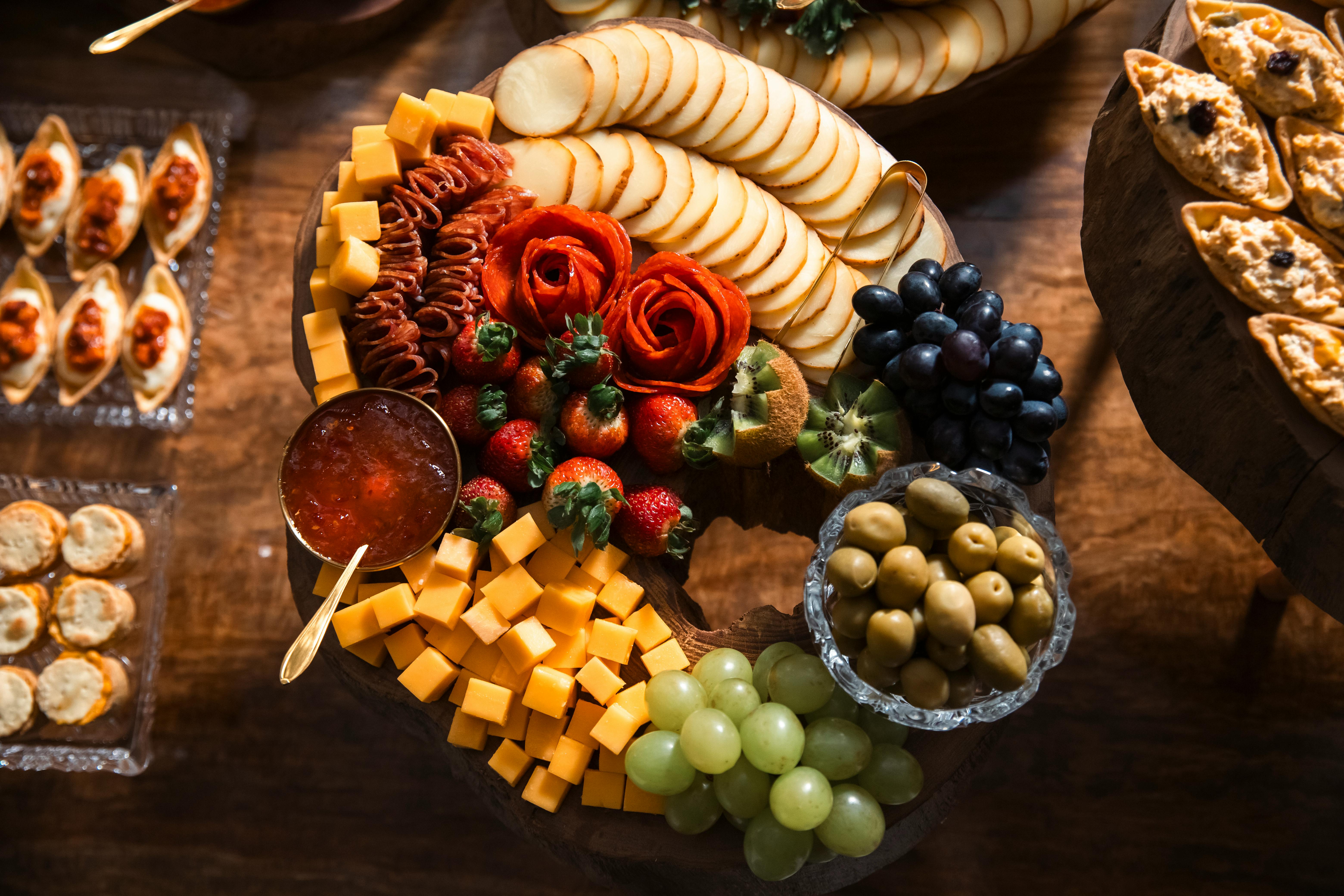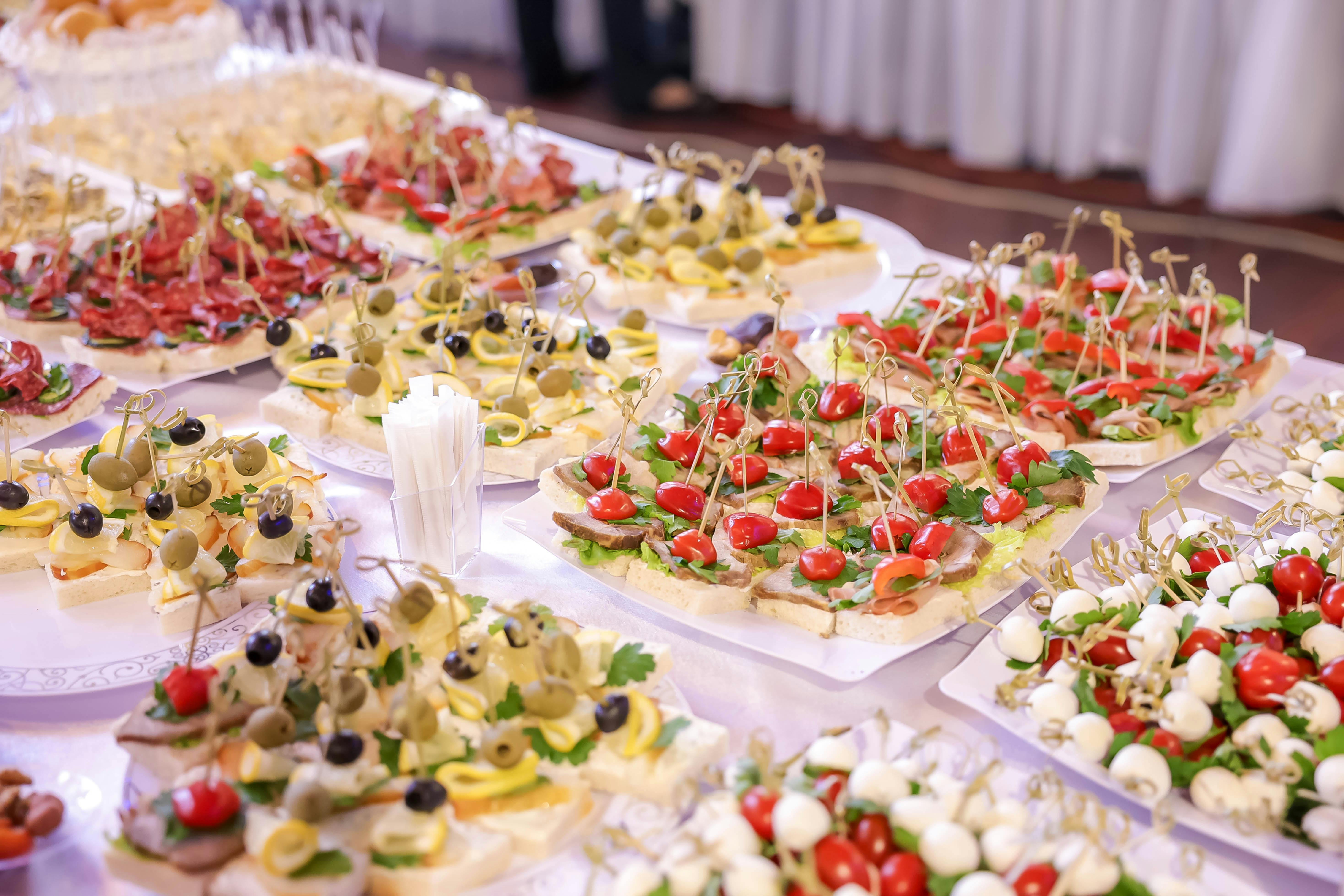
Menu design for a sophisticated NYC audience is about more than delicious food. It’s about creativity, cultural savvyness, precision, and a finger on the pulse of the city’s constantly shifting tastes.
Webb says New Yorkers eat with their eyes and expect a high level of presentation and flavor.
Whether you’re setting up an exclusive private event, starting a fine-dining endeavor, or refreshing your restaurant’s menu, your list shouldn’t just please, it should wow.
In a city where eating is serious business and culinary tastes are diverse and competitive, finding a balance between robust flavors, seasonal products, elegant aesthetic and dietary inclusiveness is key.
Done correctly, your menu is a direct reflection of your culinary brand and a memorable part of the guest experience.
Understanding Your Sophisticated NYC Audience
When devising a menu that resonates with New York City’s most fastidious diners, you need to get inside their heads and understand how they like to eat.
Know Your Audience’s Preferences
Discerning New York palates go for well-conceived plates using season-fresh ingredients, artistic combinations. Popular preferences include:
-
- Seasonal and farm-to-table ingredients
- Seafood-heavy features, like ceviche, grilled octopus or sushi
- Posh comfort food with high-end touches
- Artistic plating and unique textures
These diners have shown a deep appreciation for an attention to detail, nuanced flavor profiles, and storytelling in each dish.
Recognize Dietary Trends and Restrictions
There is a lot of interest in different types of food in NYC. Many guests follow:
-
- Gluten-free
- Vegan or vegetarian
- Keto or low-carb
- Paleo
- Dairy-free
You have to satisfy those demands, without sacrificing delectability and aesthetics. Providing these alternatives and clearly labeled dishes helps guests be comfortable with what they choose to eat.
Consider Cultural and Culinary Expectations
New York has one of the most diverse populations in the world, and its food culture is no exception. The restaurant world wants cuisine with global flavors, authenticity and an updated twist.
Consider integrating:
-
- Mediterranean mezze or tapas
- Modern Asian fusion
- Latin American flavors with refinement
- Ingredients from the greater Middle Eastern pantry, such as za’atar, tahini and preserved lemon
Let authenticity and respect for tradition be the focus of your fusion ideas.
What You Need for Menu Planning
Research Resources
Only follow those that you trust to keep up to date with the trends. Recommended platforms include:
-
- Eater NY
- Nation’s Restaurant News
- Food & Wine trend reports
- Neighbourhood food festivals and dining events
Hit up competitor menus, and check out hot NYC spots to see what the dining public is responding to right now.
Menu Planning Software
Leverage tools such as:
-
- Toast or Upserve (POS + menu engineering)
- Canva (menu design)
- Restaurant365 (cost tracking)
These tools assist with consistency in layout, profitability, and speedy updates when the seasons change.
Supplier Networks
Develop powerful relationships with local farms, specialty butchers, seafood purveyors, and artisan producers.
NYC diners love transparency and local sourcing: Hudson Valley produce, Long Island oysters, or Brooklyn-based artisanal breads.
Choose the Theme or Cuisine
Start by establishing your concept. The theme affects not just what ingredients to use, but also how to prepare each dish, and even how to arrange the food on the plate.
Articulate the Theme to Your Audience
NYC diners love thoughtful themes that feel clever, not overdone. Options include:
-
- Art-inspired fine dining
- High-end street food from across the world
- Seasonal tasting menus with wine flights
- Chef-led ingredient showcases
Attach your concept to a narrative about the journey of a local ingredient, or a journey in cuisine through a region.
Local or International Delicacies
Some menus go full-throttle with celebrating local ingredients: upstate cheeses, NYC rooftop honey, or borough-specific inspiration.
Some do well by going global:
-
- A Japanese-Peruvian Nikkei concept
- A modern Mediterranean small-plate spread
- High-end Korean BBQ with wagyu cuts
Don’t just chase trends. Be thoughtful with each decision and make sure the cuisine speaks to your space, your audience and your mission.
Balance the Menu
Match savory with sweet and creamy with crisp. Ideas include:
-
- Miso-cod with honey-heirloom carrots
- Cream of truffle cauliflower with crisp pancetta
- Pan-seared duck breast with cherry gastrique and crispy root vegetable chips
- Accent umami with wild mushrooms or aged cheeses, while balancing with bright or herbal accents
Embrace Seasonal and Fresh Ingredients
There’s nothing a dish depends on more than peak-season produce.
-
- Summer: Heirloom tomatoes, corn, fresh basil, berries
- Fall: Squash, apples, sage
- Winter: Brussels sprouts, parsnips, pomegranate
- Spring: Ramps, peas, asparagus
Sourcing seasonally offers not just taste improvement, but sustainability and culinary consciousness.

Offer Varied Course Options
You need to cater both to the casual diner and the multi-course diner. Consider:
-
- 2–3 appetizer choices (such as scallop crudo and burrata with beet purée)
- Varied mains (such as braised lamb, pan-seared halibut, wild mushroom risotto)
- Desserts with a selection (dark chocolate mousse, citrus semifreddo, vegan cashew cheesecake)
- Extras such as amuse-bouches or intermezzo courses for added luxury
Consider the Dietarily Challenged
Inclusivity is not optional. It’s essential.
Make it easy for guests to decide:
-
- Gluten-free: risotto, broiled meats, almond flower desserts
- Vegan: jackfruit tacos, lentil curry, cashew cheese boards
- Low-carb: seared salmon with creamed cauliflower
- Allergen-friendly: meal options that are carefully labeled as nut-free, soy-free, or dairy-free
Employ good substitutes, and test recipes thoroughly to keep flavor from going south.
Emphasize Plant-Based and Health-Conscious Dishes
Even carnivores are opting for plant-forward dishes more frequently. Popular items include:
-
- Cauliflower steak with romesco
- Quinoa and roasted vegetable pilaf
- Chickpea fritters with mint-yogurt sauce
- Power bowls with farro, quick pickled veg, and tahini drizzle
They can also be hearty, satisfying and highly Instagrammable.
Use Transparent Descriptions
Menu descriptions are meant to lead your guests, not lose them. Label clearly:
“Gluten-Free: Herb-Crusted Branzino with Lemon Beurre Blanc, Wild Rice Pilaf, and Haricots Verts.”
Emphasize sourcing and preparation (like “sous-vide,” “house-cured,” “smoked in-house”).
Match Dishes With Beverages
Beverage pairings take your food program to the next level and will help you drive check averages.
For each class, provide at least one recommended pairing:
-
- And tuna tartare with a dry Riesling
- Duck confit with Pinot Noir
- Syrah or Old Fashioned with Braised beef
- Get creative with pairings:
- Mezcal with mole dishes
- Sake with crudo or tempura
- A summer salad with lavender gin fizz
Educate your servers and bartenders so they can confidently speak about pairings.
Offer Sophisticated Non-Alcoholic Options
Non-alcoholic doesn't mean boring. Include:
-
- Non-alcoholic herbal mocktails (rosemary-grapefruit spritz, ginger-lime fizz.
- Fruit-infused sparkling waters
- Cold-pressed juice pairings
- Non-alcoholic wines and spirits
Lay the options out carefully so they can all get the spotlight (and equal time).
The Art of Plating
Elegant presentation is expected. Consider:
-
- Clean lines, empty spaces and natural balance
- Microgreens, edible flowers or a pop of color contrast
- Height and motion: Stack, swirl, layer
Resist the urge to overdo it, and let the crucial ingredients sing.
Design a Visually Cohesive Menu
The printed menu or digital file you use to order should be:
-
- Simple, minimalist and very easy to read
- In line with your branding (fonts, colours, layout)
- Categorized logically— appetizers, mains, sides, desserts, and beverages
Quality perception, even before a bite is tasted, is elevated if menus are aesthetically chic.
Calculate Cost Per Dish
Account for:
-
- Ingredient costs (include seasonal variation)
- Prep and cook labor
- Overhead (utilities, rentals, staff)
- Packaging (if applicable)
Use software tools for accuracy. Adjust frequencies of updates by the price rhythm.
Balance Luxury and Profit
Consider:
-
- Prix-fixe menus for control and aesthetics
- Small plates to encourage sampling
- Happy hour or tasting menus for younger crowd to address cheaper prices
Unique experiences will command a higher price from guests, but value still matters.
Showcase Ingredient Value
Include premium or locally-sourced ingredients (i.e. “grass-fed short rib” or “Hudson Valley chèvre”) in your menu descriptions to help justify cost.
Menu-Planning Challenges and How to Overcome Them
Ingredient Shortages
Have a number of suppliers and plan to switch:
-
- Burrata coming from overseas → domestic whipped ricotta
- Truffle oil → mushroom emulsion
- Fresh figs out of season? → Roasted grapes or pomegranate arils
Last-Minute Dietary Requests
Teach employees “safe” base dishes that can be customized. Keep a few gluten-free pasta or dairy-free sauce alternatives in the cupboard.
NYC Portion Preferences
Moderation and elegance: These are the qualities New York City diners appreciate. Serve small dishes for the look and emotionally satisfying taste, but don’t overload.
Have bigger mains and lighter bites for balance.
Tips for Long-Term Success
Monitor Trends
Follow platforms like:
-
- Eater NY
- The Infatuation
- Bon Appétit
Keep up with plant-forward trends, global fusions, and alternative proteins.
Listen to Feedback
Encourage feedback through:
-
- QR codes for post-meal surveys
- Review scanning on Google, Yelp and OpenTable
- One-on-one check in for regulars or private event clients
Leverage insights to deliberately evolve your menu.
Collaborate with Experts
Work in connection with sommeliers, chefs, and mixologists for:
-
- Limited-time pairings
- Themed tasting events
- Seasonal rollouts
Their knowledge lends credibility and panache to your menu story.
Craft a Menu That Speaks the Language of New York
Putting together a menu for a world-weary NYC audience is more than just putting good things into mouths. It’s about offering an artistic effort that is curated to echo imagination, quality, and cultural richness.
When your cooking adapts to fashion, is inclusive, and serves dishes with class, the city with the world’s most sophisticated dining landscape is what you expect.
Lean into your vision, hold your theme close and bring with purpose. And when the menu reflects the range and sensibilities of New York, it doesn’t just fill the bill. It fills you with awe.
Turn Your Menu Into an Unforgettable Experience with EMRG Media
Planning a high-end dining experience for discerning New Yorkers takes expertise. That’s where EMRG Media comes in.
With years of experience curating exceptional events for elite audiences, our team understands the nuances of presentation, pacing, and palate.
Take the heavy load off your shoulder by partnering with our event planning pros. Reach out today to plan your next big event.










